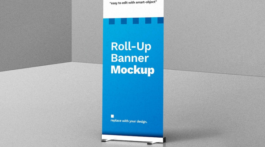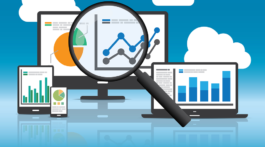Do you want to increase your revenue? Then sell more and shorten the time from the first touch to customer. Unfortunately, it’s much easier to say that than it is to do it.
There’s a silver lining though. We’ve put together this guide to help you understand what sales velocity is and how to increase it. The focus will be on making sure you understand how to accurately measure sales velocity then you’ll learn a few tips to improve it over time.
When done well, it’ll help separate you from the competition and ensure your business goes up and to the right every month.
What is sales velocity?
Put simply, sales velocity is the speed at which deals go through your sales pipeline. Put another way, it’s how long it takes for someone to go from prospect to client. It’s such an important metric because it helps you accurately predict how much money you should make based on the current leads in your pipeline.
For example, if a sales cycle takes 20 days at your organization, you know that any leads within your sales pipeline before the tenth of the month are likely to translate into revenue. Anyone that enters the pipeline after that is likely going to become a client next month.
Of course, sales velocity is an average and sometimes sales cycles are faster and sometimes they’re slower. The bottom line is that the greater your sales velocity, the more revenue in your pocket.
How to easily calculate sales velocity
The formula to calculate sales velocity is simple to understand. You take the total number of sales opportunities (N) and multiply it by average dollar value (D) and close rate (R). You divide the result of that calculation by sales cycle length (T). The sales cycle length could be days, weeks, or even months depending on the nature of your business.
(N*D*R)/T
While the calculation is straightforward, it’s easy to get a result that’s not indicative of your true performance.
For example, if you have a product that is sold to SMBs and enterprise clients, the sales velocity may be skewed too high or too low. 200 SMB clients with a deal value(D) of $500 and a sales cycle length of 14 days would give you a vastly different result than 200 enterprise clients with a deal value of $10,000 and a sales cycle length of 60 days.
Because of the discrepancies, you can get when calculating sales velocity, it’s important to segment your customer groups based on relevant criteria like average dollar value or sales cycle length.
In addition to that, you can get a more accurate sales velocity by continually measuring over time. This lets you know if the changes you’re implementing are having an impact on your bottom line. Finally, if there are large differences in the performance of individual sales reps, you may want to calculate their sales velocity separately.
How to improve sales velocity
Increasing sales velocity isn’t a one-and-done project. It takes time, effort, and constant tweaking. With that being said, there are a few things you can do to speed the process along.
Improve the quality of your leads
No amount of effort is going to help you if unqualified leads are coming through the door. Take a step back and document what a good lead looks like. Send that information over to the marketing team and help them develop campaigns that generate the right kinds of leads.
If no other changes are made then this can give your sales velocity a huge boost. Paired with other suggestions, you’ll be looking at an effective sales system.
Automate wherever you can
One thing that waits for no one is the march of progress. As your prospects have gotten more sophisticated, the tools you can use to turn them into customers have also gotten more sophisticated.
Now, it’s possible to initiate one task and set off a series of automated events that move your prospect further down the sales line. This includes adding notes triggering emails in your email marketing service, and so much more. For the same amount of effort, you get 3 – 5 times the results. Look at your current systems and think about which aspects can be streamlined and automated.
Take advantage of newer technologies
Sales, in general, is having a moment. There are CRM with advanced functionality that allows you to do so much more with fewer resources. There are tools to create signatures and send out documents for electronic signing. This alone can cut down agreement signing time by up to 40%.
Felix Yim, co-founder of GrowthBoost has this to say on the importance of adapting and seeking out new technologies “it’s quite common to see organizations stick with outdated tools or software that were great when they were smaller, but as the organization grew, the outdated tools just became a bottleneck for day to day processes. An example would be the abundance of automation tools out there, but some organizations are stuck with manual work instead. Not only will they spend more, but it eventually leads to staff dissatisfaction and ends up costing businesses great talent. So always be on the lookout for better tools to improve your organization.”
You’re able to sync tools together and do the work of two or three people in a fraction of the time. If you’re not using sales technology then you’re leaving a lot of money on the table.
Conclusion
The better your sales velocity, the faster your topline revenue grows. Most organizations don’t even look at their sales velocity so you’ve already gotten an unfair advantage.
This post has shown you how to calculate it, what factors to consider, and how to improve it over time. These insights are just the tip of the iceberg so it’s recommended that you spend some time familiarizing yourself with sales velocity then implementing the strategies you discover.





